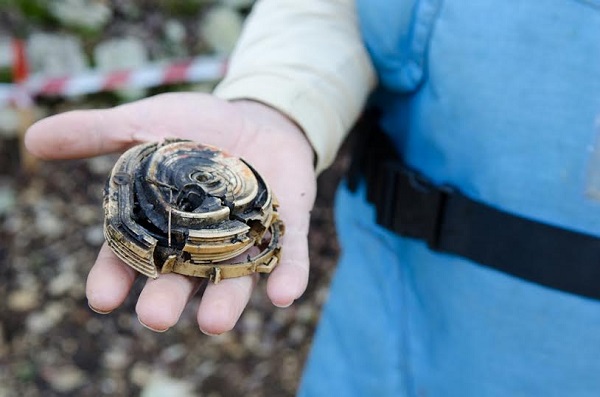
As the 'Restes de Guerres' photographic exhibition takes over Place Clairefontaine to educate the public on the detrimental effects of explosive remnants of war, Handicap International Luxembourg is calling on relevant States to remember their promise made in a Treaty in June of last year to free the world of mines by 2025.
On Thursday 26 November 2015, the Landmine Monitor published its 17th annual report on the operation of the Treaty of Ottawa, Member States of which pledged at a Maputo conference in 2014 to guarantee the eradication of mines over the course of the next ten years. The report highlighted the rising number of victims and use of these weapons, indicating that a lot of work still needed to by done in order to fulfil this promise.
"We have ten years to eradicate mines from the planet, as committed to by States party to the Treaty in 2014," stated Anne Héry, Advocacy Director for Handicap International. "Ten years to complete mine clearance, the destruction of the existing stockpile and realise commitments of assistance to victims. We particularly ask party States with contaminated territories to not relax their efforts and ask funders to not falter in their support, and to reverse the current trend marked by a slowdown in anti-mine action funding."
Handicap International stated that mine clearance was progressing too slowly in many countries, casting doubt on the political will of some States to meet their obligations. 27 of the 33 States parties contaminated by mines received an extension of their clearance date.
The Landmine Monitor 2015 report revealed that 3,678 people were killed or injured by mines or explosive remnants of war in 2014, signifying an increase of 12% from the previous year. It was also found that the use of improvised explosive devices by non-state armed groups had also risen.
"The upsurge in the use of improvised explosive devices by non-state armed groups is particularly worrying," continued Anne Héry. "We can expect even more contaminated territories and more victims in the future. Whilst a number of conflicts in the world are perpetuating or are more complicated, the stigmatisation of these weapons must be comprehensive. The application of the Treaty is the best defence against any setbacks."
Landmines and improvised explosive devices employed as mines kill, maim and are seriously consequential to their victims, of which 80% are civilians. Their presence near water points or public infrastructure represents a permanent threat and impacts the development of the countries concerned, hindering populations in performing simple everyday tasks such as fetching water or working in their fields.
However, Mozambique has been heralded as a prime example of what can be done to counteract this, with the country having been declared mine-free on 17 September. Handicap International was present in the country from 1998-2015 in order to help the decontamination process across 16 million m2. In Lebanon, 92,200 m2 were cleared by the organisation this year, with the reclaimed land returned to its inhabitants. Similar operations in Casamance, Senegal, are starting at the end of the year.
Work still remains to be done, with 57 states and four territories reportedly still contaminated with mines. 43 of these, including Syria, Iraq and Ukraine, are receiving mine clearance, risk education and victim assistance and advocacy support from Handicap International.
On 19 November, the Luxembourg branch of the organisation set out to create awareness of this global issues amongst the population of the Grand Duchy, by showcasing a photographic exhibition on the subject in Place Clairefontaine in the capital. The aim of the exhibition is to highlight the links between World Wars I and II and current conflicts around the world by demonstrating that, in every case, civilians bear the brunt of antipersonnel bombs munitions and other explosive remnants of war.
The exhibition will be on display until 30 November 2015, and then from 2 to 18 December 2015.
Photo by Molly Feltner/Handicap International








